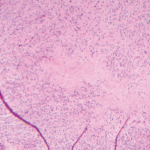Without functional FOXP3 and with impaired T regulatory cells, these patients’ checkpoints for self-immune education are disrupted. Often, patients with IPEX have type 1 diabetes and thyroid-associated immune disorders that may be diagnosed shortly after birth. T regulatory cells also play a role in controlling skin lesions. IPEX patients may present with atopic dermatitis and psoriasis, as well as skin rashes that are reactions to food allergies, which are common. They often have prolonged elevated IgE levels.
Immunosuppressants may be used to control IPEX symptoms, but hematopoietic stem cell transplantation, which requires a donor match, is the only effective treatment for the underlying disease.
In the future, research may point to ways to diagnose patients with primary immune deficiencies and autoimmunity earlier and improve first-line therapy, said Dr. Gershwin.
“Obviously, early diagnosis helps patients: It helps them prevent infection and helps in their bronchiectasis,” he said. “We may have more effective immunoglobulin treatment, maybe with longer half-life or more functionality. And of course, if we ever really knew the exact link, we [might] be able to have a bull’s eye-specific focus on how to treat those aspects of autoantibodies in autoimmune disease before they happen in patients with immune deficiency.”
Susan Bernstein is a freelance medical journalist based in Atlanta.
References
- U.S. Department of Health and Human Services. National Institutes of Health: Genetic and Rare Diseases Information Center. 2018
- Cunningham-Rundles C. Autoimmune manifestations in common variable immunodeficiency. J Clin Immunol. 2008 May;28(Suppl 1):S42–S45.
- Rodriguez-Cortez VC, del Pino-Molina L, Rodriguez-Ubreva J, et al. Monozygotic twins discordant for common variable immunodeficiency reveal impaired DNA demethylation during naïve-to-memory B cell transition. Nat Commun. 2015 Jun;6:7335.
- Barzaghi F, Passerini L, Bacchetta R. Immune dysregulation, polyendocrinopathy, enteropathy, x-linked syndrome: A paradigm of immunodeficiency with autoimmunity. Front Immunol. 2012;3;211.

